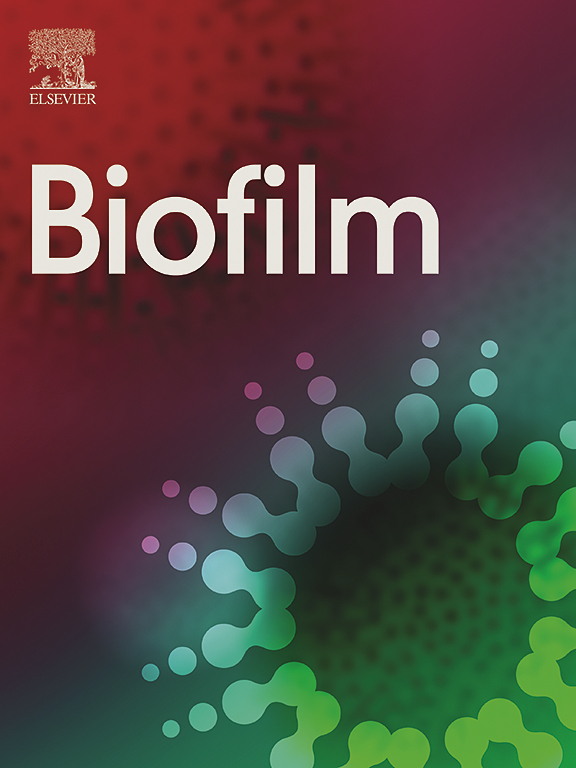Proteomic signatures of Staphylococcus aureus biofilm maturation on orthopaedic implants
IF 4.9
Q1 MICROBIOLOGY
引用次数: 0
Abstract
Implant-associated infections pose a significant clinical challenge in the orthopaedic field, often leading to implant failure and revision surgeries. These infections are hard to treat, particularly due to the formation of bacterial biofilms. Orthopaedic implant surfaces feature varying roughness and compositions to optimise implant osseointegration and performance. Highly polished surfaces are used in articulating areas of high shear force to minimise wear particle formation, while rough or porous surfaces enhance implant and bone fixation. However, increased surface roughness or porosity can also promote bacterial adhesion and biofilm formation, potentially elevating the risk of chronic infections. In this study, an automated single-pot solid-phase enhanced sample preparation protocol (SP3) workflow was developed to investigate the differences in proteomic response of immature and mature S. aureus biofilms on titanium (Ti) surfaces with varying roughness (polished, corundum-blasted), and a plasma-sprayed microporous calcium phosphate coated surface (plasmapore), representing clinically relevant orthopaedic implants. Mature biofilms showed increased proteins related to toxin activity and the tricarboxylic acid (TCA) cycle, while immature biofilms had elevated proteins tied to binding, catalytic activities, and metabolism, suggesting surface topography influences early biofilm formation. This study highlights potential protein targets for novel antimicrobial therapies and suggests testing these as coatings on Ti surfaces, with the proteomics platform serving as a tool to evaluate bacterial and host responses.
骨科植入物金黄色葡萄球菌生物膜成熟的蛋白质组学特征
种植体相关感染是骨科领域的一个重大临床挑战,经常导致种植体失败和翻修手术。这些感染很难治疗,特别是由于细菌生物膜的形成。骨科种植体表面具有不同的粗糙度和成分,以优化种植体骨整合和性能。高度抛光的表面用于高剪切力的关节区域,以尽量减少磨损颗粒的形成,而粗糙或多孔的表面增强植入物和骨固定。然而,增加的表面粗糙度或孔隙度也会促进细菌粘附和生物膜的形成,潜在地增加慢性感染的风险。在这项研究中,开发了一种自动化的单锅固相增强样品制备方案(SP3)工作流程,以研究未成熟和成熟金黄色葡萄球菌生物膜在不同粗糙度的钛(Ti)表面(抛光,刚玉喷砂)和等离子喷涂的微孔磷酸钙涂层表面(等离子体)上的蛋白质组反应差异,代表临床相关的骨科植入物。成熟的生物膜显示出与毒素活性和三羧酸(TCA)循环相关的蛋白质增加,而未成熟的生物膜则显示出与结合、催化活性和代谢相关的蛋白质增加,这表明表面形貌影响了早期生物膜的形成。这项研究强调了新型抗菌疗法的潜在蛋白质靶点,并建议将这些靶点作为钛表面的涂层进行测试,并将蛋白质组学平台作为评估细菌和宿主反应的工具。
本文章由计算机程序翻译,如有差异,请以英文原文为准。
求助全文
约1分钟内获得全文
求助全文

 求助内容:
求助内容: 应助结果提醒方式:
应助结果提醒方式:


